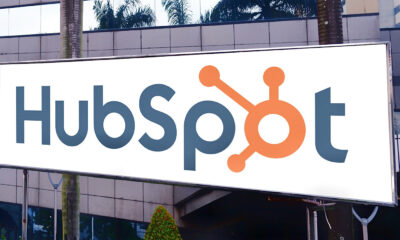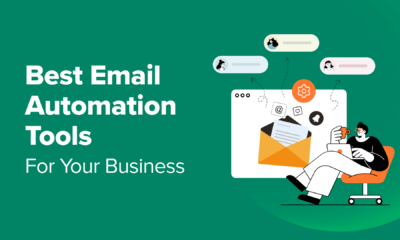One of the most common challenges organizations face concerning their martech stack is user adoption. Gartner’s 2020 Marketing Technology Survey showed that only 58% of marketing organizations utilize the full breadth of their martech stack’s capabilities.
If your end-users are not embracing a tool, it will be impossible to take full advantage of its capabilities. Under-utilization of tools can hurt your martech team’s reputation and the ability to get budget for future technology implementations. Therefore, it is critical to get your end-users engaged and using new technologies early and often.
Here are five tips to help drive user adoption of new martech tools.
Tip #1: Build a super user group and make them your advocates
It is natural for end users to resist the inevitable changes when asked to adopt new technology. Even if you upgrade or replace a tool users have complained about for years, you should expect some resistance. A new technology, even a better one, requires additional work for your users to learn the tool and adjust their day-to-day routines. This is where building a super user group can be a huge asset.
- Invite a small subset of your end users to be your super users. Try and pick people that have a lot of influence over their peers.
- Include your super users as early as possible in the process to feel some ownership over the tool. If it is possible to invite them to join and weigh in on the “bake-off” between the final two tools during the buying process, all the better.
- When onboarding the tool, utilize the super user group as your main user testing group. Take as much of their feedback as possible, and take the time to explain why some customizations they ask for may not be possible. The better they understand what the tool can and cannot do, the more likely they will share those explanations with their peers once the tool is live.
Get the daily newsletter digital marketers rely on.
Tip #2: At launch, don’t be afraid of training tactics that won’t scale
The first impression that many users have of the new technology is often the one they will stick with, regardless of how many changes or improvements you make to the tool. If your tool gets a negative reputation amongst your initial users, that negativity will spread to future groups of users in other divisions or to new employees joining the team.
That is why it is so important that you go above and beyond to make sure your users have a good first impression when launching a new tool. Do not be afraid of implementing training tactics that may not scale over the long term, like doing 1:1 sit-downs or video calls with your users and walking them through the tool personally.
These tactics may not be viable as you roll the tool out to larger and larger groups. But if the tool has a solid reputation from the initial user group, these tactics may not be needed as you grow. Future users will be looking forward to getting their chance to use it and, therefore, are more likely to take advantage of your more scalable training resources.
Tip #3: Offer a variety of ongoing training resources
A critical misstep that often befalls marketing technology implementations is taking a one and done approach to user training. Even if your initial training plan is successful, it is important to continue to offer a variety of training resources on an ongoing basis. This ensures that users will have the opportunity to upskill in the tool and take advantage of new features and offers additional opportunities for those late adopters not to be left behind.
- Short webinars and “tips and tricks” videos. Video training can be especially effective for software. Create videos that enable users to follow along and see the software interface. Break these down into five to 10 minutes snippets for specific use cases or tasks and provide a link to a library of these videos.
- Office hours. Establish regular office hours where users can drop in, ask their personal questions, and get 1:1 help from an administrator. Keep a log of what types of questions come up during office hours, and use those frequent questions as topics to create a short video training about. Offering these sessions can also encourage users to occasionally hold off on sending their questions via an email, IM, or support ticket if they know they can get them answered during office hours.
- Newsletter or Slack channel. Provide links to new training videos, offer a “tip of the week” and communicate minor updates or bug fixes via a regular newsletter or slack channel.
Tip #4: Provide rewards or recognition for top users
Show off your top users and the wins they generate from taking advantage of the tool. If your general population of users can see tangible success stories from their peers, they will be more motivated to try and create a success story of their own.
- Highlight “key win” case studies and remember to share these with your vendor. The vendor may choose to share it within their network, giving even more positive exposure to your top users.
- Write or record a fun 1:1 interview with the “user of the month.” If it aligns with your company culture, you could even create a funny, over-the-top type of trophy (perhaps take some inspiration from college football teams’ turnover gimmicks) for the user to proudly display on their desk while they hold the title.
- Offer gift cards or company swag to the top users monthly or quarterly.
Tip #5: Take advantage of vendor or outside resources to execute quick wins
One of the best ways to drive the adoption of a new tool is to generate some quick wins. If you are having trouble delivering on a particular project or idea within the tool, whether due to inexperience or lack of internal resources, do not just push that project “down the road.” Users will get frustrated hearing repeatedly that the changes they desire are coming in a future phase or at a later date. You need wins!
- Use your customer success manager. Many SaaS vendors will provide you with a dedicated customer success manager (CSM) to support your account. SaaS companies have recognized the importance of retaining clients. As a result, customer success roles grew at the sixth fastest rate in the U.S., according to LinkedIn’s 2020 Emerging Jobs Report. Take advantage of your CSM. Don’t fall into the trap of only talking with your CSM once a quarter to get a high-level update of what’s on their product roadmap. Their role is to make you successful and turn you into an advocate who will drive referrals for their product. Use them. Meet with them frequently to talk about ideas or projects you’re working on, and ask them to pull in resources on their side to help execute. Often they will be able to call in favors with technical resources, or they can connect you with other clients who can help talk you through how they solved a similar challenge.
- Plan and budget for outside help (if possible). When making your pitch for the new technology, include some budget for your implementation partner, third-party agency or outside contractors to help administer the tool for a limited “warranty period” after launch; ideally, for 60 to 90 days. No matter how much user testing you do before the official launch of the technology, there will inevitably be bugs to fix or new ideas that you will want to be able to execute quickly. Having a plan and a budget for expert resources to help you deliver those wins will generate goodwill for the tool, ultimately increasing user adoption.
Maintaining or growing your martech budget year over year often depends upon your ability to demonstrate tool utilization and report on a strong ROI for your martech stack. Your users have to actively engage with your tools to have a chance to deliver on that positive ROI. To give your team and your tech stack the best chance at success, invest in user adoption strategies when implementing new tools.
Opinions expressed in this article are those of the guest author and not necessarily MarTech. Staff authors are listed here.




![How to Create A Website to Sell Products In 8 Steps [+6 Expert Tips] How to Create A Website to Sell Products In 8 Steps [+6 Expert Tips]](https://articles.entireweb.com/wp-content/uploads/2024/10/1727868370_How-to-Create-A-Website-to-Sell-Products-In-8.webp-400x240.webp)
![How to Create A Website to Sell Products In 8 Steps [+6 Expert Tips] How to Create A Website to Sell Products In 8 Steps [+6 Expert Tips]](https://articles.entireweb.com/wp-content/uploads/2024/10/1727868370_How-to-Create-A-Website-to-Sell-Products-In-8.webp-80x80.webp)










![YouTube Ad Specs, Sizes, and Examples [2024 Update] YouTube Ad Specs, Sizes, and Examples](https://articles.entireweb.com/wp-content/uploads/2024/06/YouTube-Ad-Specs-Sizes-and-Examples.jpg)















You must be logged in to post a comment Login